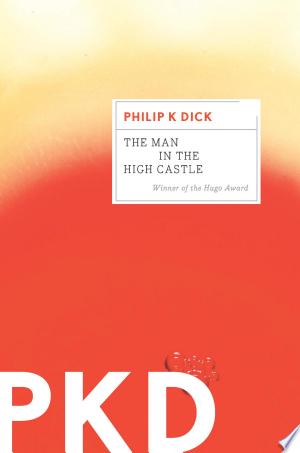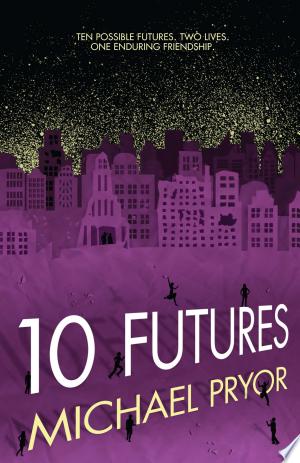Estimated read time: 5 min read
One Sentence Summary
An alternate history where the Axis Powers won World War II and the United States is divided between Japan and Germany.
Table of Contents
Introduction
In the realm of speculative fiction, "The Man in the High Castle" stands as a landmark novel that explores an alternative history. Written by Philip K. Dick and published in 1962, the book offers a thought-provoking glimpse into a world where the Axis Powers triumphed in World War II and the United States is divided into territories ruled by the Japanese Empire and Nazi Germany. This book summary will delve into the plot overview, setting, main characters, themes and insights, and provide a reader's takeaway from "The Man in the High Castle."
Brief Synopsis
"The Man in the High Castle" takes place in a post-World War II America where the Axis Powers have won the war and divided the United States. The novel primarily focuses on the lives of several characters who are connected through a mysterious book called "The Grasshopper Lies Heavy," written by the elusive author known as "The Man in the High Castle." This book presents an alternate history in which the Allies emerged victorious.
Plot Overview and Setting
The novel is set in 1962, in a United States where the Japanese Empire controls the West Coast (known as the Pacific States) and Nazi Germany exercises authority over the East Coast (known as the Greater Nazi Reich). The Rocky Mountain States remain a neutral zone serving as a buffer between the two powers. The setting immerses readers in a world where American culture has been suppressed and replaced by the dominant Japanese and Nazi influences.
The plot intertwines the lives of various characters whose paths intersect throughout the story. Frank Frink, a Jew living under Japanese rule, struggles to maintain his identity and his relationship with his estranged wife, Juliana. Also, readers follow Robert Childan, a Californian antique dealer obsessed with maintaining social status and catering to Japanese clients. Another key character is Nobusuke Tagomi, a high-ranking Japanese official who grapples with the moral implications of his allegiance. The storylines of these characters eventually converge as they are all drawn towards the mysterious "Man in the High Castle" and his controversial book.
Main Characters
Here are the main characters in "The Man in the High Castle," each representing different perspectives and experiences:
| Character | Description |
|---|---|
| Frank Frink | A Jew living in San Francisco under Japanese rule, grappling with identity and survival. |
| Juliana Frink | Frank's estranged wife, who becomes involved in a dangerous mission. |
| Robert Childan | An antique dealer in San Francisco, navigating the complexities of his business and relationships. |
| Nobusuke Tagomi | A high-ranking Japanese official, tasked with diplomatic relations with the Nazis and wrestling with moral dilemmas. |
| The Man in the High Castle | An elusive author whose book, "The Grasshopper Lies Heavy," challenges the established reality. |
Themes and Insights
"The Man in the High Castle" delves into various thought-provoking themes and offers readers several insightful takeaways. One central theme is the exploration of the nature of reality and perception. The characters in the book grapple with the idea that reality may be malleable and that there exist alternate versions of history. This theme encourages readers to question their own perception of reality and consider the possibility of multiple narratives.
Another theme is the examination of the consequences of oppressive regimes. The book illustrates how totalitarian regimes strip away individual freedoms, suppress culture, and manipulate historical narratives. Readers are invited to contemplate the dangers of unchecked power, the importance of safeguarding personal liberty, and the impact of ideology on society.
Additionally, "The Man in the High Castle" explores the theme of identity and its relationship to cultural heritage. Characters like Frank Frink and Juliana Grink struggle with maintaining their identity and reconciling their heritage with the dominant culture forced upon them. This theme invites readers to contemplate the complexities of identity and the role culture plays in shaping one's sense of self.
Reader's Takeaway
"The Man in the High Castle" offers readers a unique and immersive reading experience through its thought-provoking alternative history. The complex characters and their intertwining storylines draw readers into a world where the political landscape has been radically altered. The exploration of themes such as perception, the consequences of oppressive regimes, and the complexities of identity provides readers with valuable insights and prompts critical thinking about our own reality and society.
The book serves as a cautionary tale, reminding readers of the importance of safeguarding individual freedoms, critically analyzing narratives presented to us, and questioning the power structures in place. It encourages readers to reflect on the impact of ideology on society and the potential consequences of unchecked power.
Conclusion
"The Man in the High Castle" stands as a seminal work in speculative fiction, presenting readers with an alternative history where the Axis Powers are victorious in World War II. Through its intricate plot, diverse array of characters, and exploration of themes, the book challenges readers to question their own perception of reality, contemplate the consequences of oppressive regimes, and reflect on issues of identity and cultural heritage. As readers delve into the pages of "The Man in the High Castle," they are offered a captivating and thought-provoking journey into a world that could have been.
The Man in the High Castle FAQ
What is 'The Man in the High Castle' about?
'The Man in the High Castle' is a novel written by Philip K. Dick. It is set in an alternative history where the Axis powers won World War II and America is divided between Nazi Germany and Imperial Japan. The book follows various characters as they navigate this dystopian reality.
Who is the author of 'The Man in the High Castle'?
The author of 'The Man in the High Castle' is Philip K. Dick.
When was 'The Man in the High Castle' published?
'The Man in the High Castle' was first published in 1962.
Is 'The Man in the High Castle' part of a series?
No, 'The Man in the High Castle' is a standalone novel. However, it has inspired a television series of the same name.
Has 'The Man in the High Castle' won any awards?
Yes, 'The Man in the High Castle' won the Hugo Award for Best Novel in 1963.
What genre does 'The Man in the High Castle' belong to?
'The Man in the High Castle' is classified as a science fiction and alternate history novel.
Is 'The Man in the High Castle' suitable for young readers?
Due to its mature themes and content, 'The Man in the High Castle' is recommended for mature readers.
Are there any adaptations of 'The Man in the High Castle'?
Yes, 'The Man in the High Castle' has been adapted into a television series by Amazon, which ran from 2015 to 2019.
What is the reception of 'The Man in the High Castle'?
'The Man in the High Castle' has received critical acclaim for its thought-provoking narrative, compelling characters, and exploration of the consequences of alternate history.
Where can I buy 'The Man in the High Castle'?
'The Man in the High Castle' can be purchased from various bookstores, both online and offline. It is also available as an e-book and audiobook.





